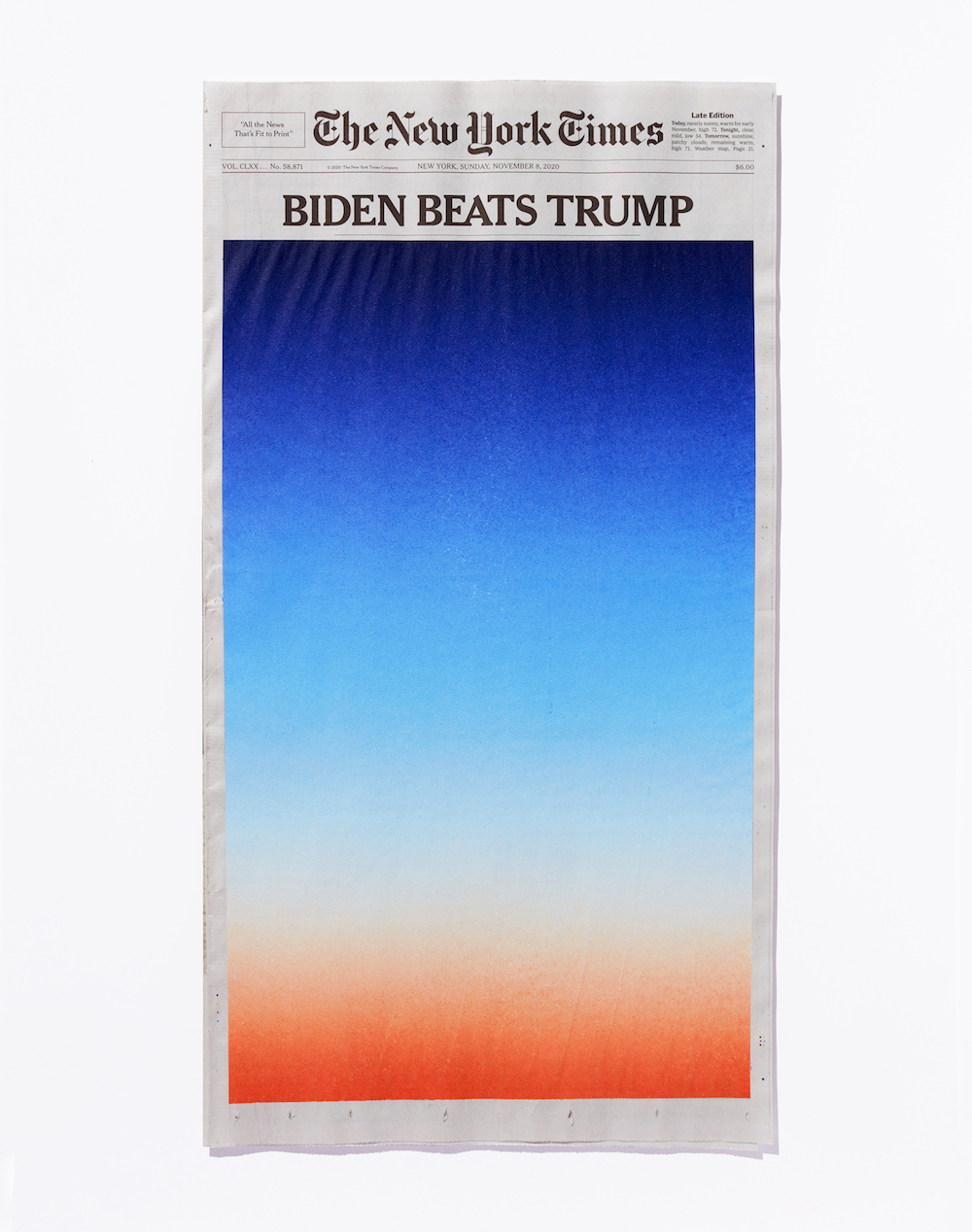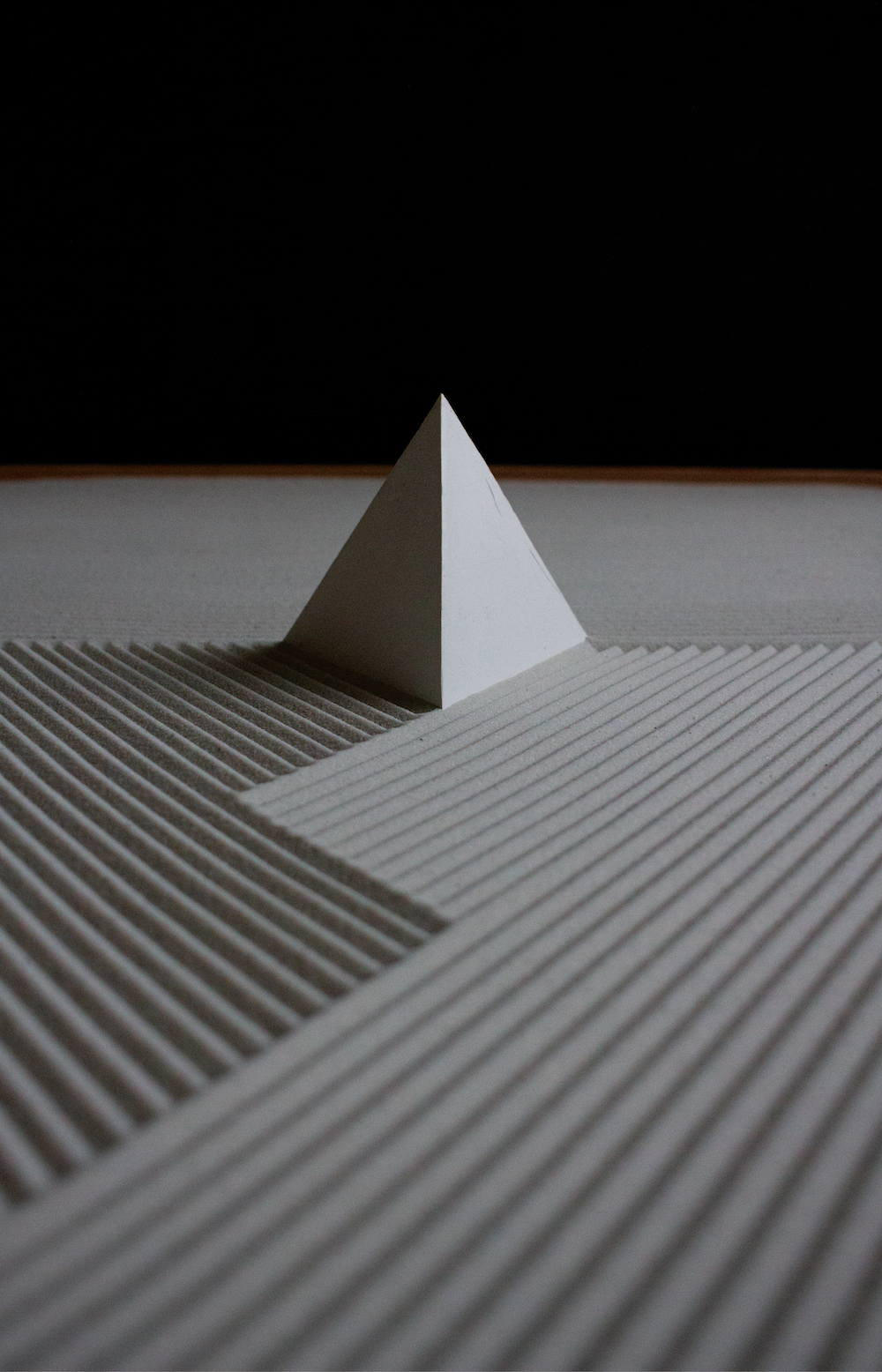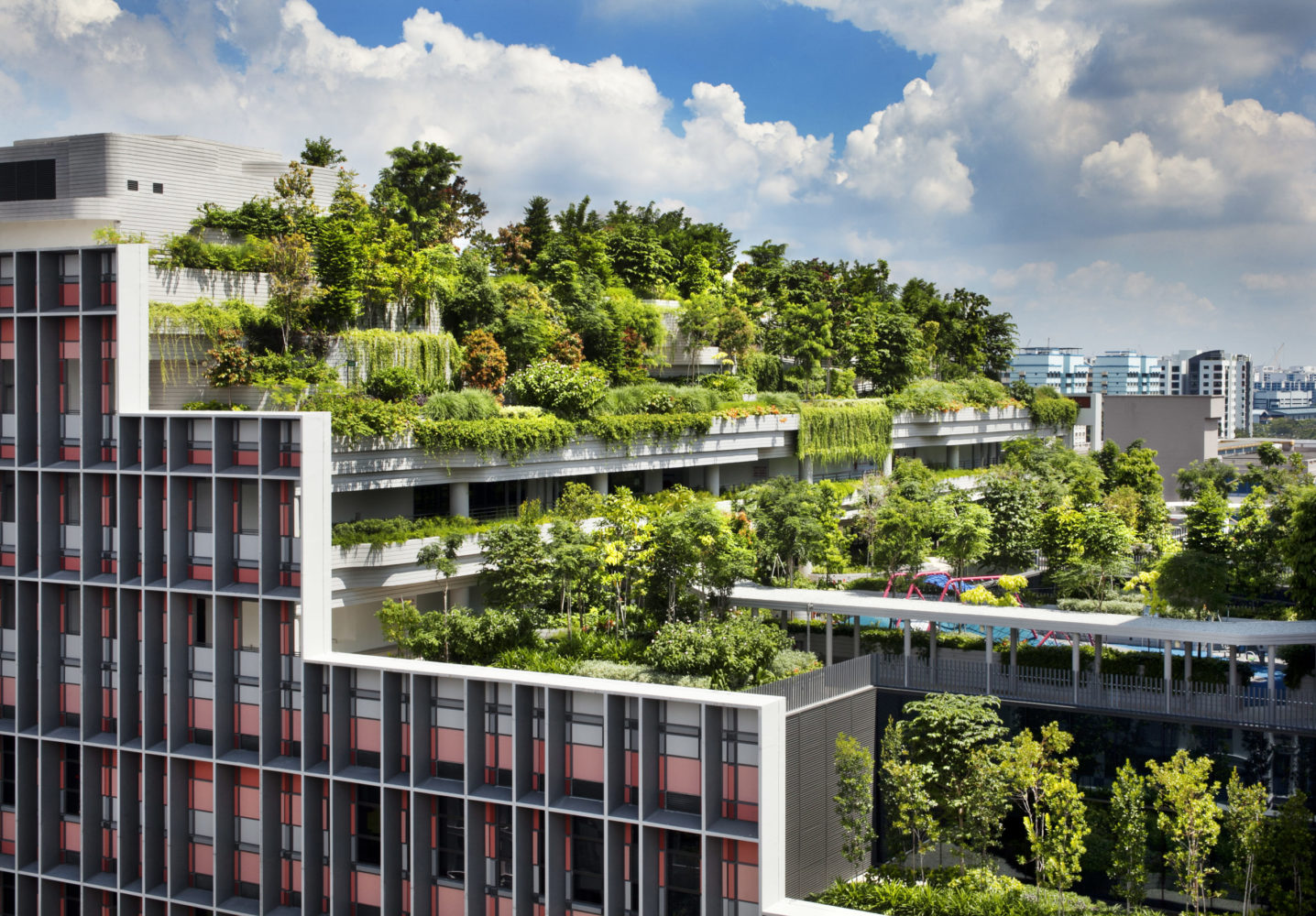Two years ago, Elena Feit was in Shanghai finishing her MBA in digital marketing. There, she spent most of her free time at fabric markets, dreaming up an innovative fashion concept, and working hand in hand with designers and tailors to realize her creative vision. But she couldn’t ignore the larger picture that surrounded her—pollution, created by the very industry and city in which she was working.
That concern led Feit to launch The Ethiquette in March of 2020. Its name combines “ethics” and “etiquette,” and the French brand offers two collections—one couture and one retail available to rent and buy. All pieces are made from upcycled haute couture fabrics and vintage hand-embroidered Indian saris.
With a small, all-female team, Feit is also building a community through memberships. The perk allows customers to rent more looks per year, engage in dinner parties, atelier visits, special privileges with local restaurants and spas, and more.
Whitewall spoke with Feit about The Ethiquette’s values, and their social commitment to a circular economy.
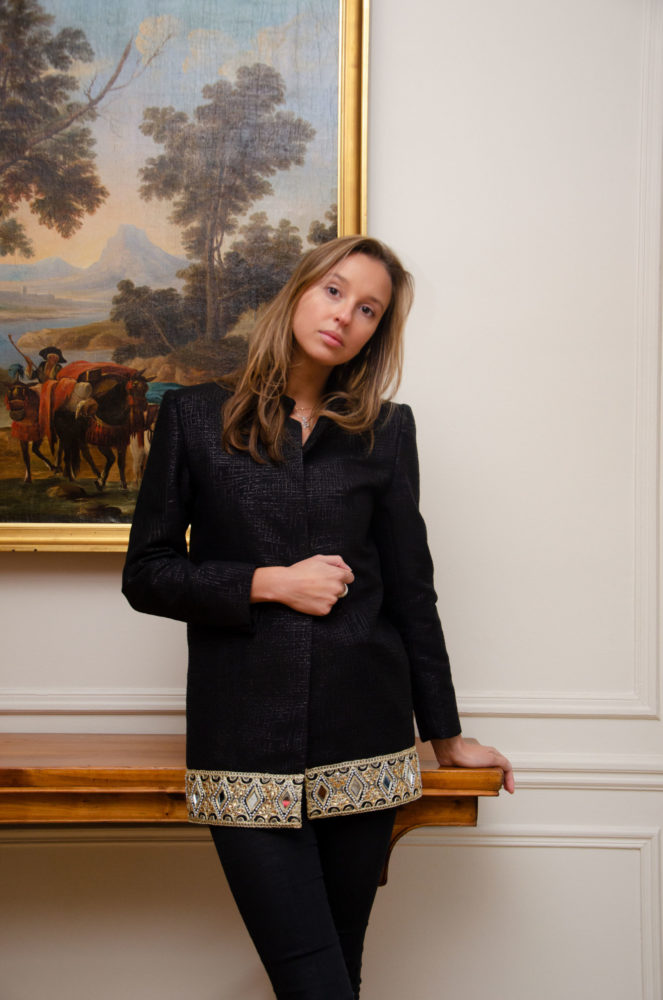
Portrait of Elena Feit by Cristian Gavidia.
WHITEWALL: How has The Ethiquette evolved since its launch last year amid the pandemic?
ELENA FEIT: The haute couture collection was only available through membership at the time, which also gave access to a private club, but we’ve since extended it to be rented by everyone. We also launched By The Ethiquette, the retail collection, which is still sophisticated, but more casual than the couture collection.
WW: The brand offers iconic French garments, including capes, corsets, vests, berets, and tweed patchwork sets. How are you sourcing the fabrics and creating the pieces at your atelier in Paris for both collections?
EF: We have partnerships with haute couture fabric makers like Malhia Kent, which is the fabric maker of Chanel tweed. For lace, we have partnerships with Sophie Hallette and Jean Bracq. We also have partnerships with Swarovski and Lelièvre—a high-end furniture fabric maker. And for the embroideries, we use vintage saris from India.
We take either deadstock fabric or leftovers, the ends of rolls. Patchwork is the only way to work with small pieces like this. We also have some limited-edition pieces. For example, Valentine’s Day, we launched only 20 crop tops in pink because it was the end of the roll. Because of this approach, we really promote the fact that we only make unique pieces—for both the couture collection and the retail collection. So we have all the fabrics in the studio, and then after seeing them, we design from what we have.
For the saris, we work with someone in India—Navreet “Reet” Kaur—to source those directly. She also has an NGO called The Pink Foundation in Chandigarh, India, and we give a part of our proceeds to that. They teach underprivileged women and children how to sew and the business behind being a seamstress, the know-how of the embroidery in India.
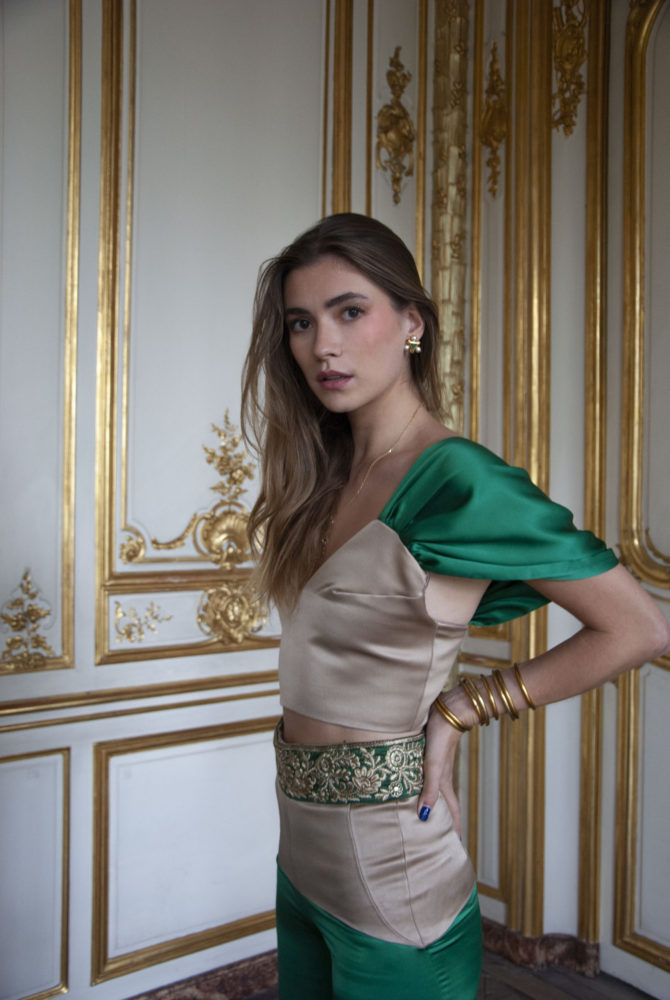
Photo by Angélique Perrin, courtesy of The Ethiquette.
WW: What is your idea behind The Ethiquette’s circular economy aspect?
EF: I wanted to go further into the sustainability process than other brands do. So the basis of the business model is circular economy—from the design to the conception. We even use our little leftovers for collaborations with other brands, or we give them to schools or associations that will reuse them. Everything is sustainable: sourcing, designing, creating, and donating to the NGO.
WW: How does the membership system go beyond renting clothing and brand into community building?
EF: We have four different subscriptions, which depend on the number of looks you want per year, from four to sixteen. All memberships have access to our private events and to our two couture shows per year. We also organize some member dinners so they can meet and spend time together. You have a membership card, assigned with a The Ethiquette number, that gives you access to our partnerships with spas, yoga studios, restaurants, gifts from beauty brands, and more.
You also have privileges with rentals. If you don’t fnd the right size or color in the showroom, we’ll make another model especially for you. After you wear it, we put it back in the showroom. So you participate in the creation aspect of the brand. You can make a piece with us by choosing the fabric in our atelier with us.
I really want to gather clients and members around The Ethiquette lifestyle because I wanted the French l’art de vivre to be reborn through the brand. Sustainability doesn’t have to be boring or simple. It can be super unique and glam and luxurious. If I gather the members around dinners, they can actually know themselves and each other. It’s super important, because when you create a community, this is how people come back. It’s been about a year, and generally, our clients have already bought about three or four pieces. It’s better for me to have fewer clients and a stronger community so they repeat purchases, rather than one- shot buys without a community. The lifestyle and the experience of the brand is really important. We want to provide a 360-degree experience.
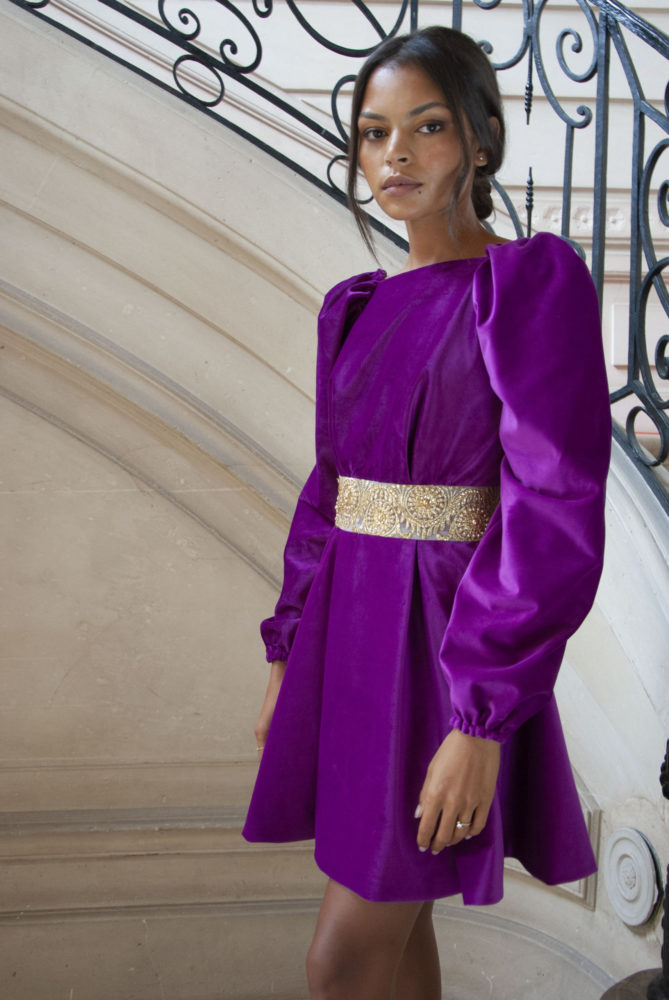
Photo by Angélique Perrin, courtesy of The Ethiquette.
WW: The Ethiquette’s Instagram is a mood board of Parisian rooms, vintage fashion, art, and interior design. What’s your personal relationship like to art and design?
EF: I’ve always been in that sector. I love the culture, I love art. Four years ago, I lived in New York and was really into the art world. Here in Paris, I’m in love with the Musée d’Orsay, the Fondation Azzedine Alaïa in Le Marais, and Palais Galliera. And in terms of design, I’m really inspired by Yves Saint Laurent—in the seventies.
WW: How has the pandemic impacted the The Ethiquette and its community?
EF: It’s really impacted the community aspect. We couldn’t continue our shows and member dinners, which was the key of our community gatherings. Because of COVID-19, we are focused more on the retail collection, By The Ethiquette, and not producing as many couture pieces as before. We really had to adapt. After COVID, we decided to do it independently. We no longer want to follow the fashion week calendar.
WW: Where is the future of fashion?
EF: I hope the future of fashion will be more about rarity and uniqueness. I also hope there will be fewer fashion shows, fewer collections, and more giving back to the old haute couture houses where people were actually designing for the clients and not retailers.
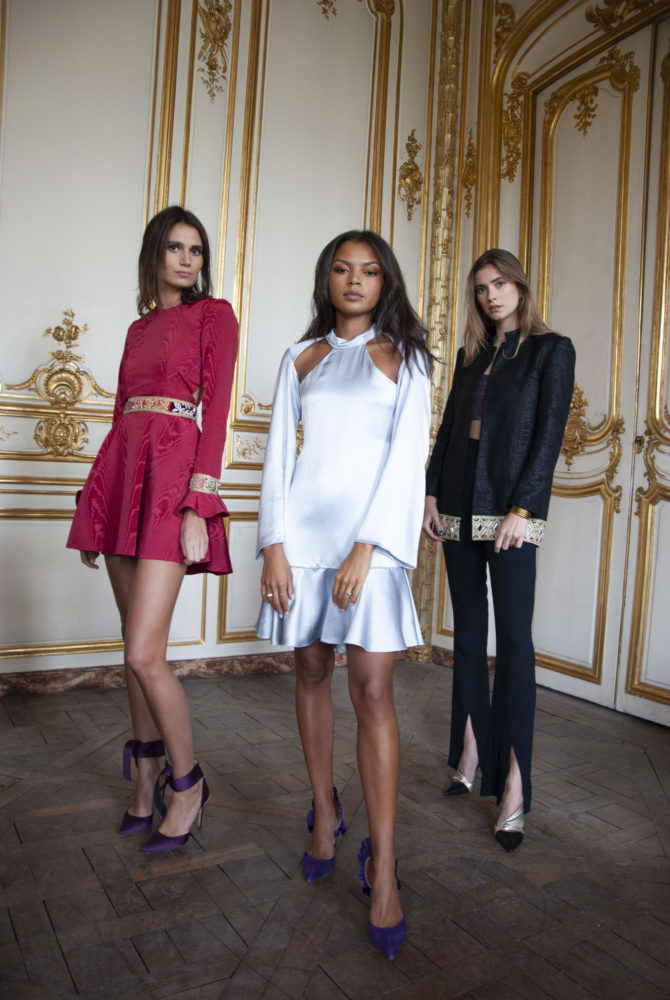
Photo by Angélique Perrin, courtesy of The Ethiquette.




